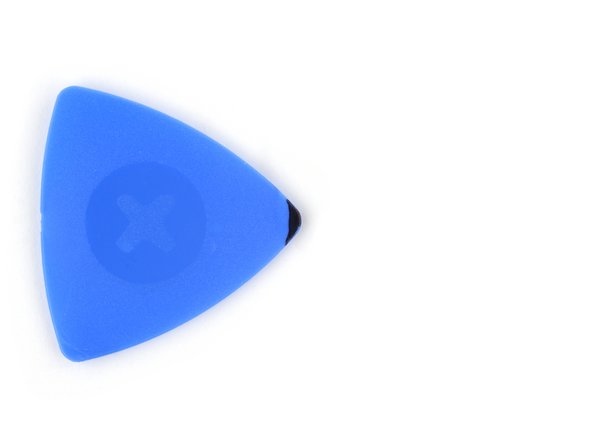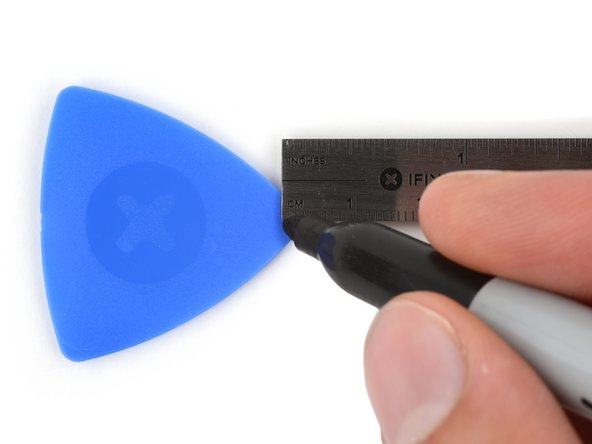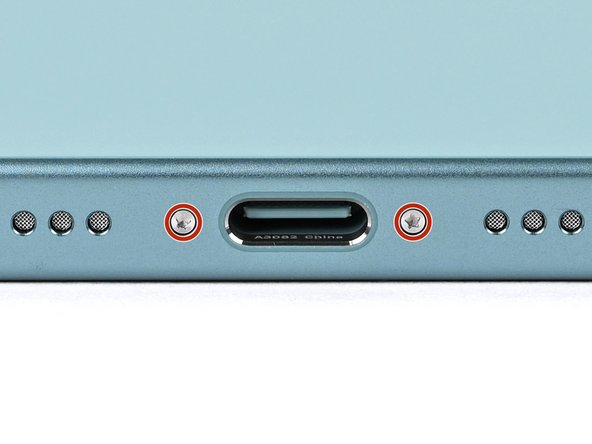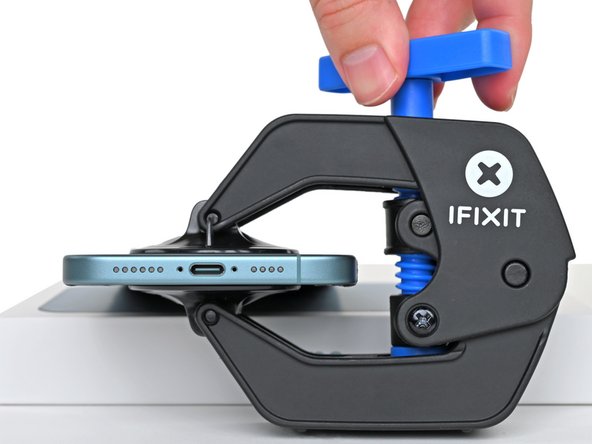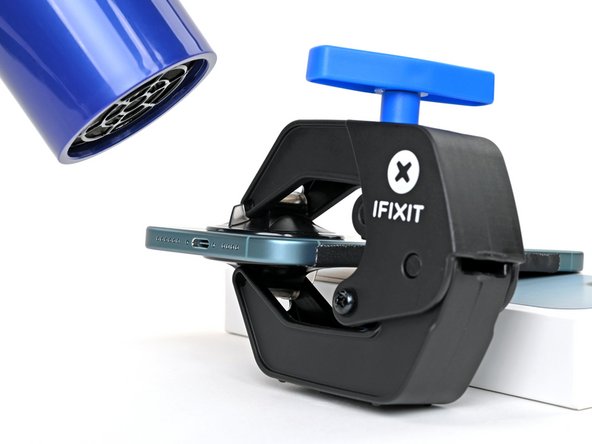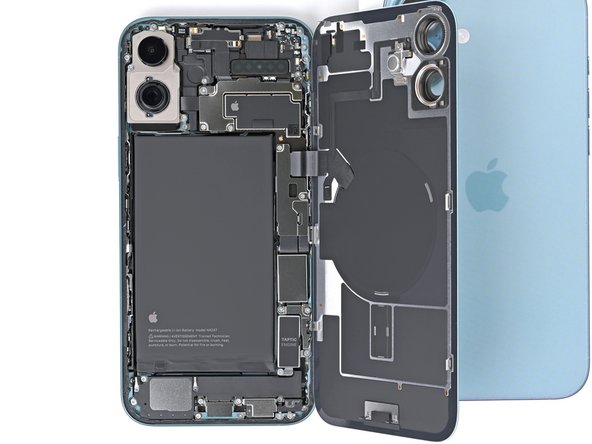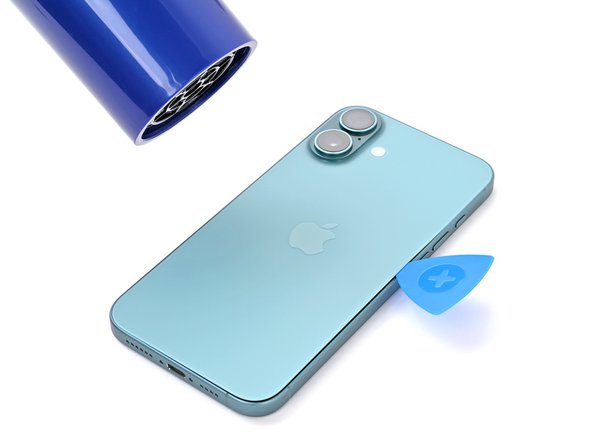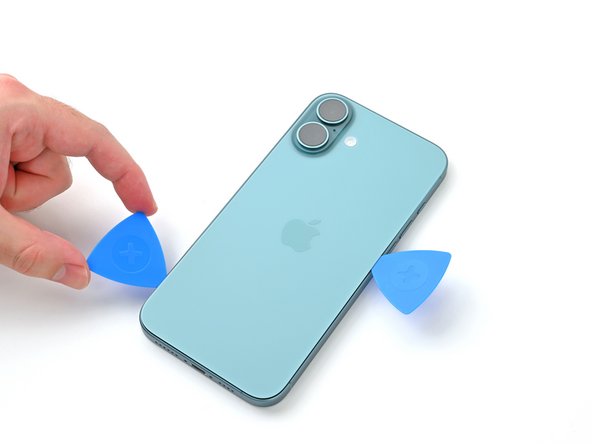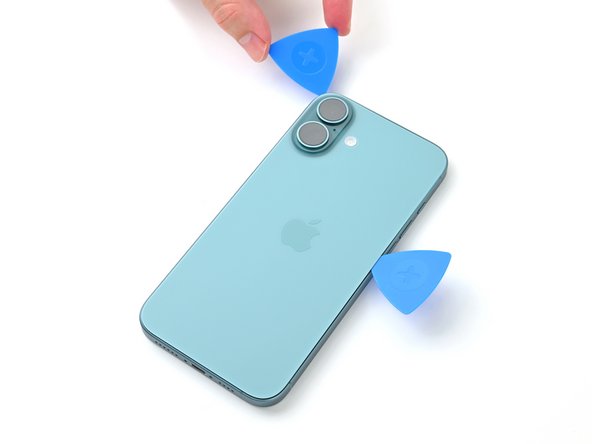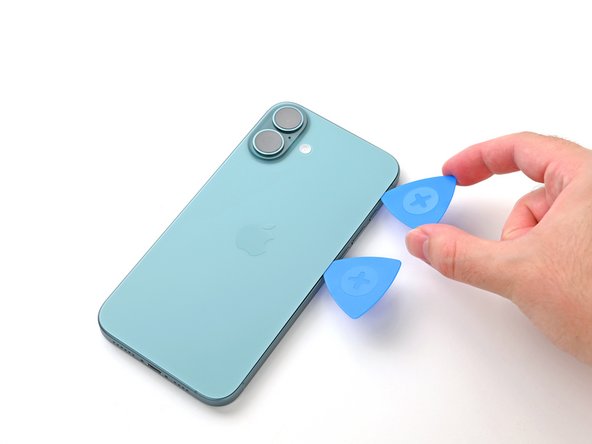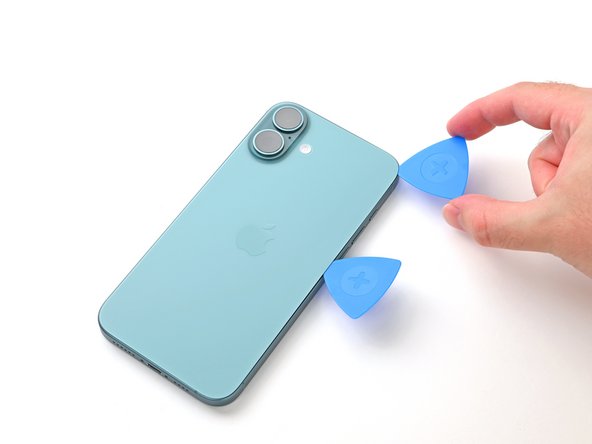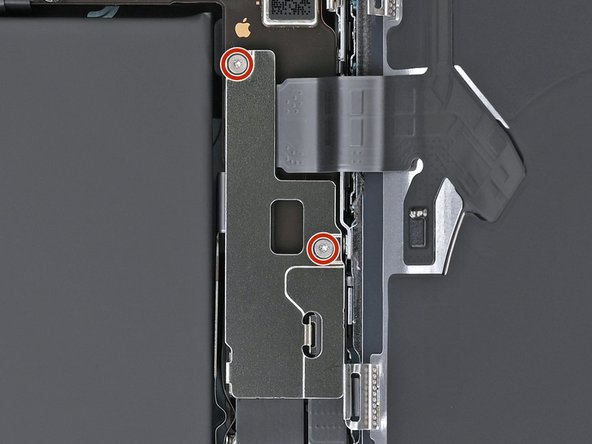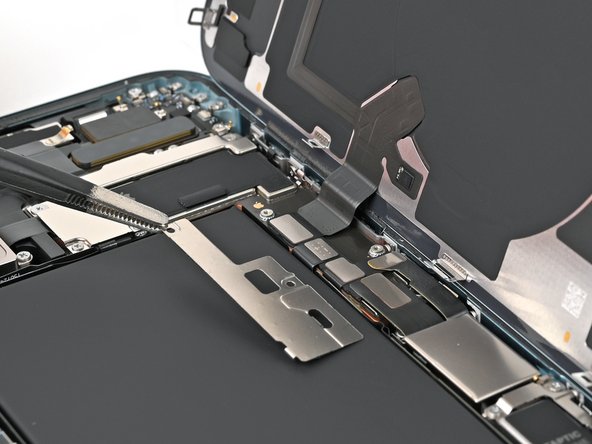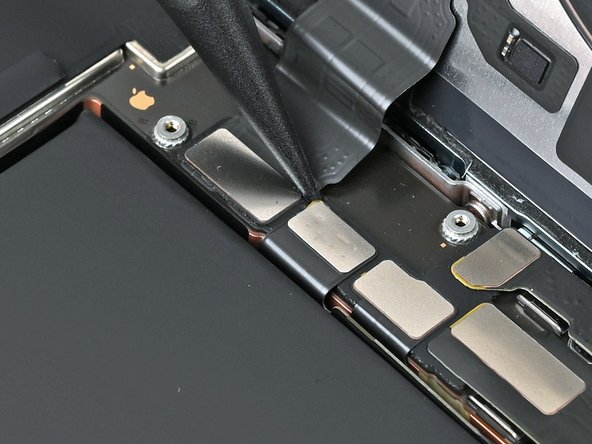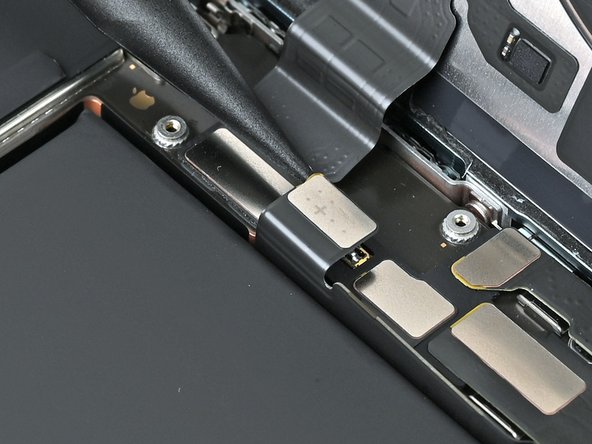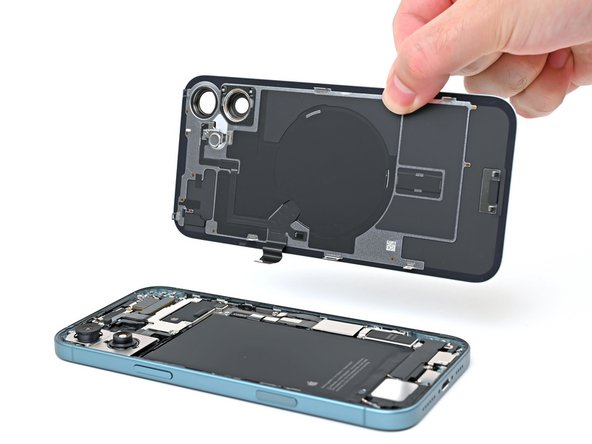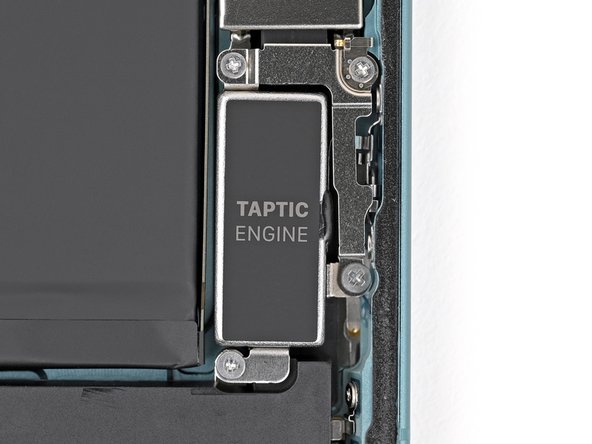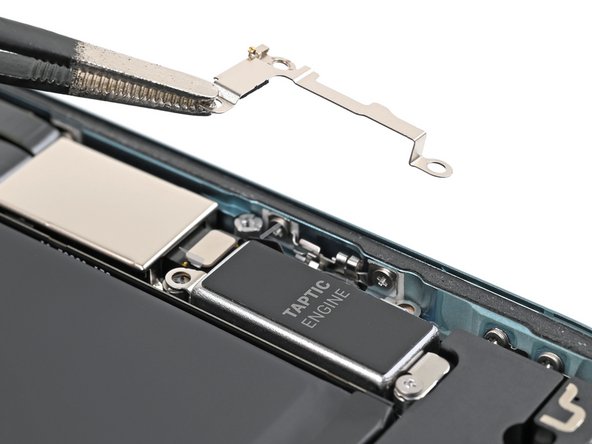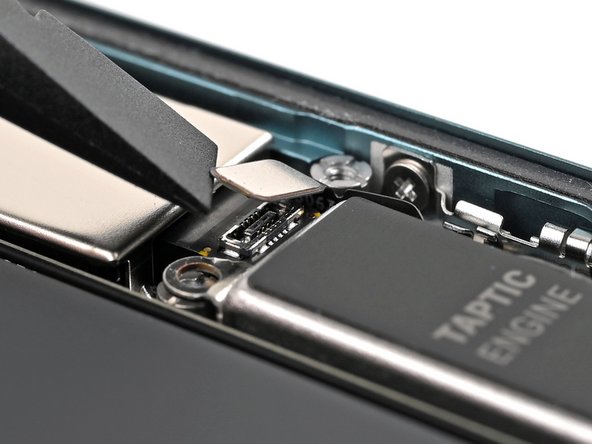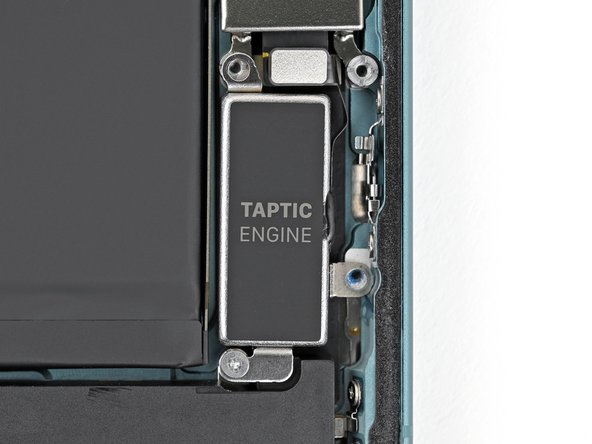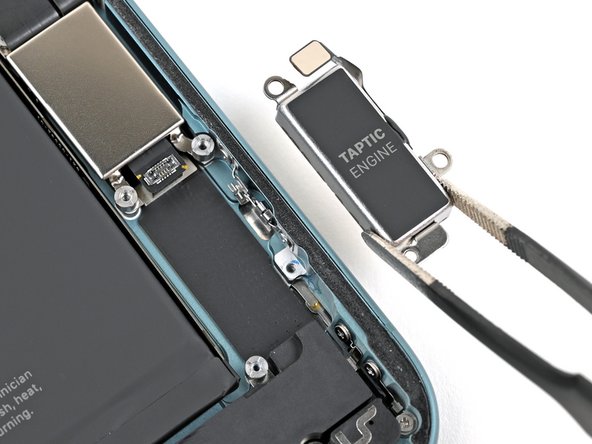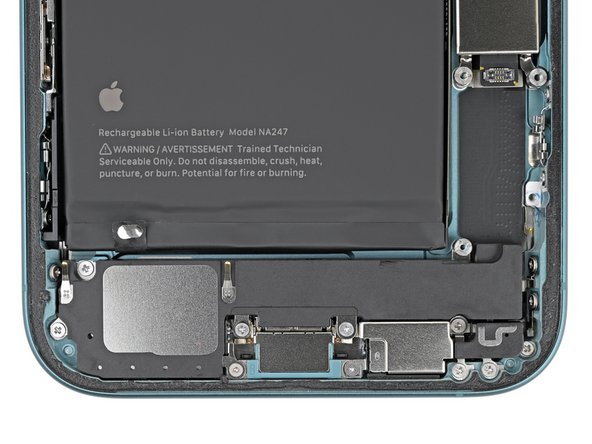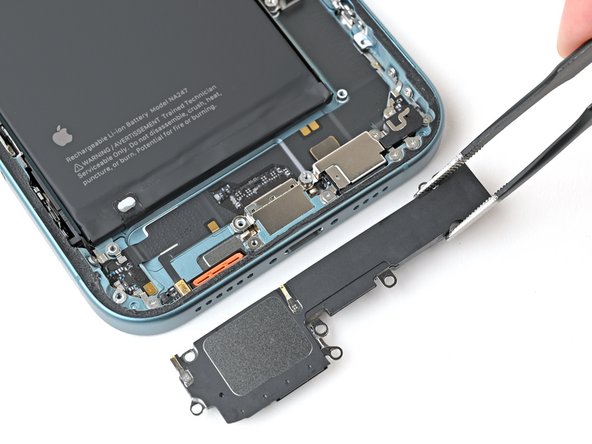How to Replace iPhone 16 Plus Loudspeaker Tutorial – DIY Repair Guide
Duration: 45 minutes
Steps: 32 Steps
Follow this step-by-step guide to swap out the loudspeaker in your iPhone 16 Plus. If your bottom speaker is sounding a bit off or crackling, it might be time for a replacement. You’ll also need some fresh back glass adhesive to get the job done. If you need help, you can always schedule a repair.
Step 1
Let your phone’s battery dip below 25% to avoid any safety hazards from a charged lithium-ion battery.
– Disconnect all cables from your device.
– Press and hold the power button along with either volume button, then slide to power off your phone.
Step 2
Find a nice flat spot near the bottom edge that’s big enough for a suction cup to grab onto.
– Got a screen or back glass that’s more cracked than a dropped egg? Lay some overlapping strips of packing tape over it—this nifty trick keeps you safe and makes taking it apart a breeze! If you need help, you can always schedule a repair.
Tools Used
Step 3
Avoid inserting the pick too far to prevent device damage. Mark your pick and play it safe!
Give the other corners of your pick different measurements for extra caution.
Or, tape a coin 3 mm from the tip of your pick for a simple, effective guide.
– From the tip, measure 3 mm and mark the opening pick with a permanent marker. If you need help, you can always schedule a repair.
Step 4
– Grab your trusty P2 pentalobe driver and carefully unscrew those two 7.7 mm-long screws flanking the USB-C port. You’ve got this!
Step 5
Let’s get into the Anti-Clamp! It’s our special tool that makes opening your device a breeze. Not using it? No worries, skip four steps ahead for another method.
The Anti-Clamp uses suction to grab both the screen and the back glass. But if you just need the back glass off, be sure to tape down the screen.
For all the deets on using the Anti-Clamp, check out this guide.
Remember, that tape is only for the screen—not the back glass!
– Snip off two strips of tape, place them along the long sides of your phone, and fold them over the screen to keep everything snug and secure.
Step 6
If your phone’s surface feels like it’s auditioning for a slippery slide competition and the Anti-Clamp just won’t grip, grab some tape and give it a textured makeover for a better hold.
– Pull back the blue handle on the Anti-Clamp to unlock those arms.
– With the back glass facing up, slide the arms over the right edge of your phone. One suction cup should be on the back glass and the other on the screen. Center them near the bottom edge.
– Keep your phone level while it’s held between the Anti-Clamp’s arms—a small box does the trick.
– Squeeze the cups together to create suction.
Step 7
No tape? No problem! Warm up those suction cups to help them stick. If you need help, you can always schedule a repair.
– Give that blue handle a gentle tug forward to lock those arms in place.
– Now, twist the handle all the way around (that’s a full 360 degrees) or until you see those cups start to stretch out.
– As those cups stretch, keep an eye on their alignment—make sure they’re standing tall and straight! If they start to wobble, just pop off the Anti-Clamp and stick some tape on there to help the cups stay put.
Step 8
Just a friendly reminder to keep the heat in check—going overboard can put your battery at risk. Let’s keep it cool!
Or, grab a hair dryer or heat gun and warm up the bottom edge of the back glass until it’s nice and toasty.
If you don’t see a gap after a minute, hit it with a bit more heat and give the handle a quarter turn. Let the Anti-Clamp do its thing, and keep at it as needed. If you need help, you can always schedule a repair.
– Warm up your iOpener and give some love to the bottom edge of that back glass for about two minutes.
– Take a breather for up to a minute and let the adhesive do its thing – watch as it separates and a little gap appears between the back glass and frame.
Tools Used
Step 9
– Gently slide the tip of an opening pick into the gap, just like slipping into your favorite pair of shoes.
– Carefully detach the Anti-Clamp by pulling on the tabs of the suction cups – it’s like giving it a little hug goodbye!
– Feel free to skip the next two steps; you’ve got this!
Step 10
Watch out for the heat! Keeping your phone at a comfy temperature is key—too much heat can be a real bummer for your battery.
On the flip side, a trusty hair dryer or heat gun can work wonders! Just warm up the bottom edge of that back glass until it feels nice and toasty to the touch.
– Warm up the bottom edge of the back glass with a heated iOpener for two minutes. It’s like giving your device a cozy little spa treatment before we get to the fun part!
Tools Used
Step 11
– Stick a suction handle onto the bottom edge of the back glass, just above the USB-C port.
– Give it a firm, steady pull to create a gap between the back glass and the frame.
– Slide the tip of an opening pick into the gap.
Tools Used
Step 12
As you carefully cut through the adhesive holding the back glass in place, keep an eye on these key spots:
– Careful now—there’s a super delicate cable behind the back glass, right by the volume up button. Steer clear with your pick to keep it intact.
– This phone’s got quite a few spring contacts around the edge. Don’t let your pick wander deeper than suggested to keep those contacts nice and straight.
Step 13
Don’t go deeper than 5mm with your pick on the bottom edge, or you might mess up those spring contacts! If you need help, you can always schedule a repair.
– Gently glide your pick back and forth along the bottom edge to break free the adhesive’s grip.
– Keep your pick lodged in the bottom right corner to keep that adhesive from making a comeback.
Step 14
Grab your hair dryer or heat gun and warm up the back glass until it’s nice and toasty.
– Warm up the right edge of the back glass with a heated iOpener for two minutes to get things nice and cozy.
Tools Used
Step 15
Keep your pick to a maximum of 5 mm along the right edge to prevent any mishaps with the spring contacts and ribbon cable. We want to keep everything intact!
Steer clear of slicing too close to the volume buttons; we wouldn’t want you to accidentally tangle with the wireless charging/flash cable!
– Gently slide your pick around the bottom right corner and glide it halfway up the right edge, stopping when you hit that satisfying hard stop at the clip holding the back glass in place.
– Keep that pick in there to stop the adhesive from getting all clingy again.
Step 16
Grab your trusty hair dryer or heat gun and warm it up until it feels nice and toasty!
– Warm up that iOpener and give a little love to the left edge of the back glass for a cozy two minutes.
Tools Used
Step 17
Keep your pick at a cool 5 mm or less along the left edge to steer clear of any spring contact mishaps. You’ve got this!
You’ll feel and hear the metal clips pop free as you go.
– Pop in a second opening pick at the bottom edge, just like you’re slipping a bookmark into your favorite novel.
– Gently glide that second pick around the bottom left corner and along the left edge of the screen. This will help you separate the adhesive and let those metal clips breathe a little.
– Keep that pick snugly placed at the top left corner to stop the adhesive from playing tricks and resealing.
Step 18
Grab your hair dryer or heat gun, and heat it up until it’s toasty to the touch.
– Heat things up a bit by applying a warm iOpener to the top edge of the back glass, making sure to angle it just right to cover those volume buttons, and let it work its magic for two minutes.
Tools Used
Step 19
Keep your pick no deeper than 3 mm along the top edge to steer clear of those delicate spring contacts. You’ve got this!
You should hear and feel those clicks as the top two clips snap free.
– Gently glide your opening pick along the top edge, making your way around the top right corner to the volume up button. This will help you break that stubborn adhesive seal.
Step 20
Hold your horses on yanking that back glass off! It’s still connected by a delicate ribbon cable. Just follow the next steps to gently and safely get it off.
If the back glass isn’t swinging open smoothly, no need to force it—just circle back around the edges with your pick to see if you’ve missed any sneaky adhesive spots or stubborn clips.
You might have to give the back glass a gentle lift before swinging it open to completely free those clips.
– Carefully flip the back glass towards the volume buttons, like opening a book.
– Prop the back glass up with something clean and sturdy, like a small box, so the cable doesn’t get strained.
– Take out the opening picks.
Step 21
– Grab your trusty tri-point Y000 driver and let’s unscrew the two 1.3mm-long screws holding down the middle connector cover. You got this! If you need help, you can always schedule a repair.
Step 22
Watch out for that battery! We want to keep it safe and sound, so avoid any dents or punctures while you’re working on it.
– Grab those blunt-nose tweezers or use your fingers to slide the cover towards the left edge of the phone and pop that hook out of its slot on the logic board.
– Off goes the cover!
– When putting it all back together, align the hooks with their slots on the logic board, press down the cover, and slide it towards the right edge to secure the hooks in place.
Step 23
– Grab your trusty spudger and gently use its pointy end to lift and disconnect the battery press connector. Easy peasy!
– When it’s time to put things back together, be sure to line up that connector just right over its socket. Give it a little press down with your fingertip or the flat end of your spudger—start on one side, then the other—until you hear that satisfying click. Remember, no need to force it! If it’s being a bit tricky, just reposition and give it another go. And if you ever need assistance, feel free to schedule a repair.
Tools Used
Step 24
– Grab your trusty spudger and gently pop up and detach that wireless charging coil press connector. If you need help, you can always schedule a repair.
Tools Used
Step 25
– Pop off the back glass and set it aside.
– While putting things back together:
– It’s a good time to test your repair before sealing everything up. Temporarily reconnect the battery and back glass (skipping the adhesive for now), power on your phone, and ensure it works as expected. Power it down again, disconnect the battery, and proceed with reassembly.
– Follow this guide to reapply adhesive and secure your back glass.
Step 26
– Grab your trusty Phillips screwdriver and let’s tackle those three screws holding the Taptic Engine bracket in place:
– Two screws are 1.9 mm long, just right for this job.
– And don’t forget the one screw that measures 2.1 mm long.
Step 27
– Grab those trusty tweezers (or your fingers, if you’re feeling bold) and carefully pop off the Taptic Engine bracket. Easy peasy! If you need help, you can always schedule a repair.
Step 28
– Take the flat end of your spudger and gently pop off the Taptic Engine press connector. If you need help, you can always schedule a repair
Tools Used
Step 29
– Grab your trusty Phillips screwdriver and unscrew that 1.8 mm screw holding the Taptic Engine in place. You’ve got this!
Step 30
– Grab those blunt-nose tweezers or just use your fingers to lift and remove the Taptic Engine. If you need help, you can always schedule a repair.
Step 31
Watch out! Don’t let that screwdriver take a stab or dent at the battery.
If you find yourself without a standoff driver, a slim flathead driver can come to the rescue—but tread carefully to avoid stripping those delicate notches on the screw heads.
– Grab your trusty Phillips screwdriver and let’s get those four screws holding the loudspeaker out of there!
– Next up, take your tri-point Y000 screwdriver and tackle that 1.3 mm-long screw that’s keeping the grounding contact and the loudspeaker firmly in place.
– Now, switch to your standoff screwdriver to unscrew the 3.4 mm-long screw that’s securing the loudspeaker.
– Don’t forget about the three 1.5 mm-long screws waiting for their turn!
– And finally, there’s that one sneaky 3.0 mm-long screw just waiting to be removed.
Tools Used
Step 32
– First things first, grab that loudspeaker and gently take it out. You’ve got this!
– When you’re putting everything back together, just double-check that the orange speaker gasket is snugly seated in its little home in the frame. You’re almost there!





